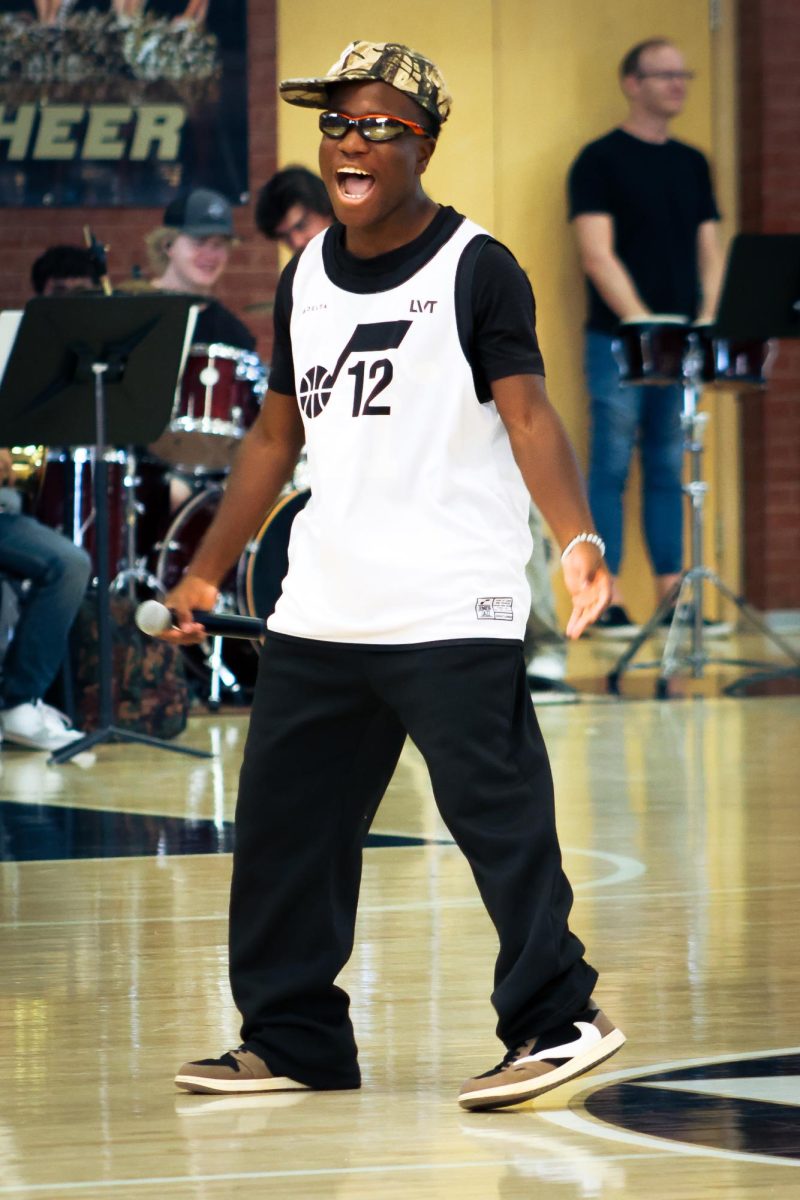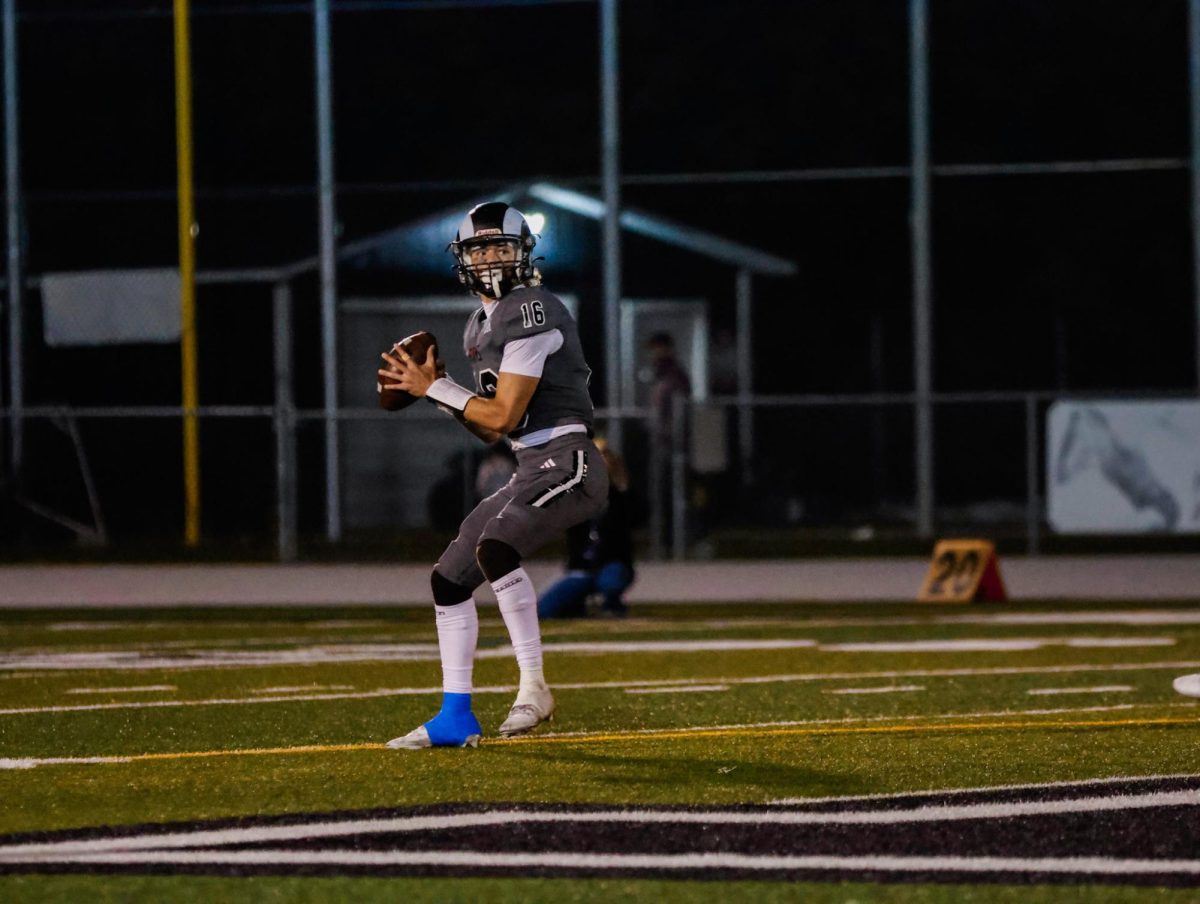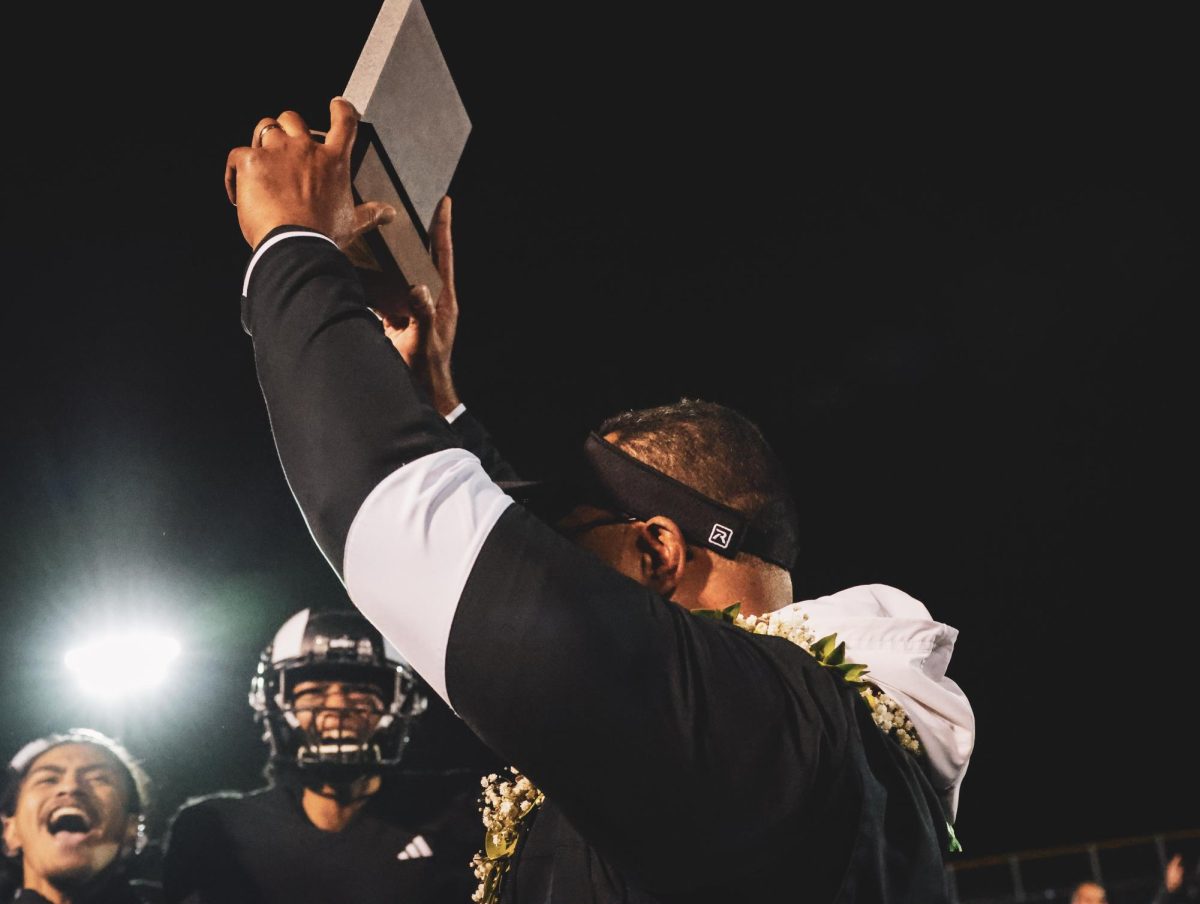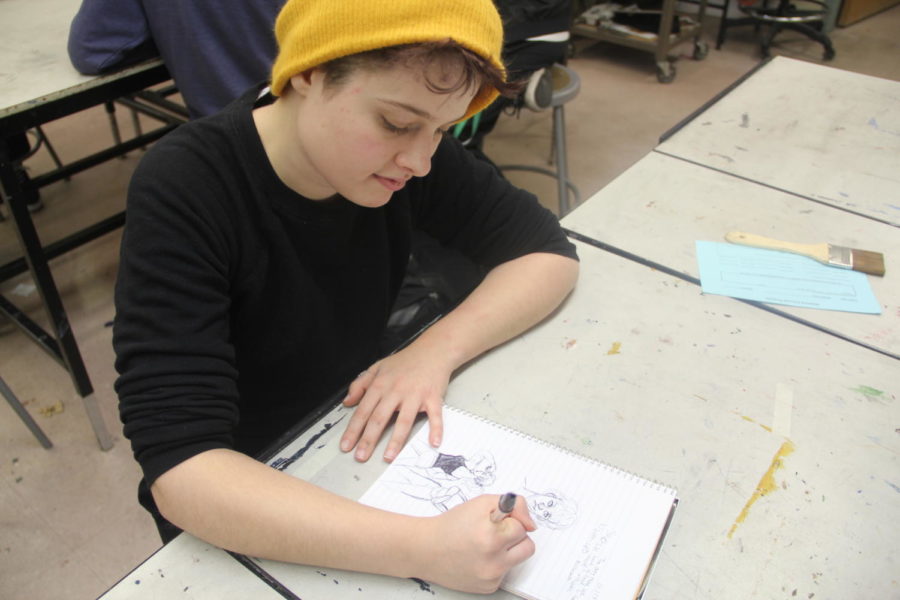Living With Disability
Some Have Obvious Hardships, Others Are Hidden, But It Takes Strength To Perservere
February 13, 2019
Sitting with her friends at lunch, Romney Cannon can eat just about anything she wants… but not before making sure she has the right amount of insulin filtering through her veins.
In 2015, Cannon got sick. At first, it was nothing to worry about, just a sort of bad cold with the typical cough and fatigue, but two months passed and her “bad cold” was no better.
A doctor’s visit later and Cannon was diagnosed with type one diabetes and a hardship she would have to live the rest of her life with. Type one diabetes is a disease in which the pancreas doesn’t make insulin, a hormone that enables blood sugar to enter cells in the body for energy. Without this insulin, sugar will build up in the bloodstream, causing high blood sugar which is severely damaging to the body and can be fatal without treatment. Prevention for this type of diabetes is unknown. There are students all around Highland who probably don’t even know the pancreas makes insulin, but Cannon couldn’t forget even if she wanted to. It runs her life, and if not cared for, could ruin it too.
Cannon isn’t the only one living every day of her life with hardship that others may not always understand. While some people’s hardships are obvious, easy for the average eye to see, others are not as apparent. There are people everywhere living with hardships the average person will never even notice, much less understand.
In order to eat what she wants the way everyone else can, Cannon must keep putting insulin into her bloodstream 24 hours a day. In order to do this, Cannon uses an insulin pump that delivers insulin continuously to her body and keeps her blood sugar levels in range between meals and overnight. However, before Cannon started using an insulin pump, she had to give herself shots regularly. The average person can’t even stand the regular shot at the doctor every so often, much less, imagine having to give themselves a shot every meal.
“I used small needles and everytime I wanted to eat. I would have to calculate the amount of carbs in the food and take the correct amount of insulin for it,” Cannon said.
For Cannon, math was a matter of life and death.
A part of having type one diabetes is dealing with hypoglycemia. There are multiple things that can cause a diabetic to get hypoglycemia, such as having too much insulin, not eating enough, or doing too much activity. Hypoglycemia can cause shakiness, dizziness, anxiety, nausea, and fatigue.
“Hypoglycemia is also just known as low blood sugar and it happens to me pretty often. When it happens, I need to eat sugar to get my [blood sugar] up again. When my blood sugar gets low, people don’t understand why I have to stop immediately and eat to get it up, and it’s always hard to explain to them,” Cannon said.
Everyone has heard of diabetes, and it’s often the punch line of jokes, but this disease is nothing to joke about. There are two types of diabetes, type one and type two, one of which is preventable, the other is not. Compared to type two diabetes which is mostly seen in people over the age of 45 and caused by bad eating and lifestyle, type one diabetes is seen in children and teenagers, a product of an autoimmune reaction in pancreatic beta cells. It’s not something they can help. But if someone says “diabetes”, people think unhealthy, they think out of shape. They think type two.
“I’ve had older people tell my mom that it’s her fault because she fed me too much sugar, which is rude and a complete misunderstanding. I don’t like when that happens, and I don’t like how type one and type two diabetes have the same name because of that misconception. They are two totally different things,” Cannon said.
Another misconception of diabetes is that people with type one diabetes are only affected while eating. The truth is, blood sugar can rise or drop at any time, and while it’s affected by sugar and what Cannon eats, her blood sugar can change anytime throughout the day, making school and classes more difficult at times.
“It affects school when my blood sugar goes too high or too low because I can’t think straight when that happens, and if it doesn’t get fixed it can be fatal or have lasting health consequences, so I have to stop what I’m doing right away and fix the problem,” Cannon said.
For another person living with hardship, school is more of a silver lining than a struggle.
Denise Hevner, the instructor of the CTE welding course at Highland, has taken her hardship and turned its tragedy into a learning tool for the students she teaches. Twelve years ago, in an accident with a drill press machine, Hevner lost her left ring finger. Early in the morning, Hevner’s boss asked her to drill some oily parts. Just a few days prior, she had gotten stitches on the back of her hand, and not wanting to get those stitches or the bandage around them oily and dirty, she put on a glove, something she’d learn the hard way was the wrong thing to do.
“I went to brush away the drill chips that were laying on top of the vice and I actually got too close. The bit caught my glove and it pulled my glove along with my hand and bandage and everything into the drill bit. So it kind of wrapped my hand around it,” Hevner said.
When Hevner went with her first instinct, pulling her hand away from the drill bit, her glove and bandage were ripped from her hand and stayed wrapped around the drill bit, her finger staying in the glove as well.
“I went into shock, so I couldn’t scream or vocalize. One of the people I worked with was standing nearby and he could kind of see the blood and me holding my hand and everything. I looked up at him and he looked at me, and he asked if I was okay, and I couldn’t speak. All I did was shake my head,” Hevner said.
While she has learned to turn her bad memory into a lesson, it took a long time to do so.
Hevner was fortunat, that of all fingers, she lost the one we use the least, but she still had to change the way she did things she once took for granted. Little things she once did with ease were now difficult or not possible, like carrying change or the habit of wiping her eye. There are many things people get used to doing, habits that take seconds to make and years to break. Not only were small things difficult, but she also had to change the way she did things she loved.
At the time, she was in a bowling league, a league she loved. But she bowled left handed, and of course, the ring finger is one of the fingers that is used to grip the bowling ball. She had to learn to bowl right handed, her scores going down drastically. But she still bowls, being part of a league every other year or so.
It wasn’t just physical things that Hevner had to change, but her mentality was altered too. Having a part of herself missing lead to major changes in self confidence, as it would for anyone. For about six months after the accident, she wore a glove to cover it up and hide it.
“I’m not sure if I was hiding it more from other people, or if I was hiding it from myself,” Hevner said.
Another thing that was difficult was operating the machine again. After a leave of two months, once she came back to work, Hevner detoured around the shop to avoid the machine completely, not even wanting to be next to it, the monster of her memory lurking in the back of her mind when she looked at it.
While Hevner got over her fears as well as learned new ways to do the things she’d lost the ability to, it doesn’t mean that people understand the struggle she has gone, and still goes through everyday.
Fingers are actually one of the more common things that people lose, so there are people that can relate to Hevner’s tragedy, but their understanding is quickly covered up by the emotional pain caused by those who don’t understand.
“They say it’s just a finger, why does it matter? Those are things that really hit me hard emotionally, because it’s something that’s part of me, or not part of me anymore, and so I had to learn to accept it which makes it difficult when other people will challenge that and question my abilities because of it,” Hevner said.
No matter the emotional pain, the physical pains, or the misunderstandings, Hevner has found light in her dark experience, using it to teach and accept.
“A part of me is gone, and I can’t grow it back like a lizard tail. It is what it is, but it’s actually funny because my boyfriend that I’ve been with for about three years is actually missing a finger, so that’s something we get to share with each other,” Hevner said.
While Hevner has found someone who understands what she has and does go through, not all people with these hardships have the same comfort. Jasper Wardle longs to find comfort and understanding in those that know what he is experiencing, someone he can talk to who won’t turn a blind eye, but any of those people that might possibly understand must be at least six feet away at all times.
Wardle has cystic fibrosis, a disease that affects close to one out of every 3,000 newborns, making it nearly impossible for anyone to even fathom what he is going through, and other people with cystic fibrosis, those that could understand, can’t be close to each other or they could get each other extremely sick.
The symptoms of cystic fibrosis can include cough, repeated lung infections, and an inability to gain weight because of plugged up tubes, ducts, and passageways for sweat, mucus, and the digestive system. Life expectancy for people with cystic fibrosis is 42-50, and although treatment can help, this condition cannot be cured.
“It has made my point of view really different from others sometimes. Like in death, I believe in having death positivity, as in, I’m going to die when I die, and that’s okay,” Wardle said.
That doesn’t mean that he won’t care for himself health wise, but Wardle believes that so many people, deep down, fear death. Wardle has known of his own mortality ever since he was about six or seven. Most kids at that age are thinking about sports and movies, not the fact that they probably won’t live to see the age of 50. It’s impossible for nearly everyone to understand what that must be like.
“Sometimes cystic fibrosis can make me stop enjoying life because mine probably won’t be long, so what’s the point? What’s the point in trying to achieve anything worthwhile if it won’t really matter, if I don’t have the time,” Wardle said.
Wardle has battled with depression alongside his cystic fibrosis for almost his whole life. While depression does run in his family, his disease and the misunderstandings that come along with it can make his thoughts a thousand times worse.
“Kids used to run away from me because they thought I was contagious, even though it’s chronic which means I was born with it and it is not contagious. That’s when I picked up art. I wanted to prove something, so I started learning how to draw. I hated it for years and years but I didn’t stop, and I still haven’t,” Wardle said.
So while cystic fibrosis has prevented Wardle from doing some things he wants to do, and mentally holds him back, he believes that trying will always be better than giving up. He looks up to his role model, Theodore Roosevelt suffered chronic illness but, to make himself keep trying when he doesn’t want to. Wardle has an asthmatic component to his cystic fibrosis, which in an ironic sense makes him look up to Roosevelt more.
“I don’t want people to think, ‘oh charity case’, or ‘whiny person’, or that I’m just that guy with a disease. I’m a person, no matter what genetics I was born with,” Wardle said.
There are plenty of people at Highland living through their own hardships, some easy to notice, and others more difficult. People like Wardle, Hevner, and Cannon know that others need to get to know the truth of others, their hardships as well as who they are as people.
Cannon knows that people won’t always understand the disease she has. Hevner knows that others may look at her differently or not understand what she goes through day to day, and Wardle knows that she has knowledge of a mortality that the average person will never have.
But they all also know they have one thing in common: through their struggles, they will persevere.































Laura • Feb 20, 2019 at 8:21 am
Wonderful and uplifting article. I learned a lot too.